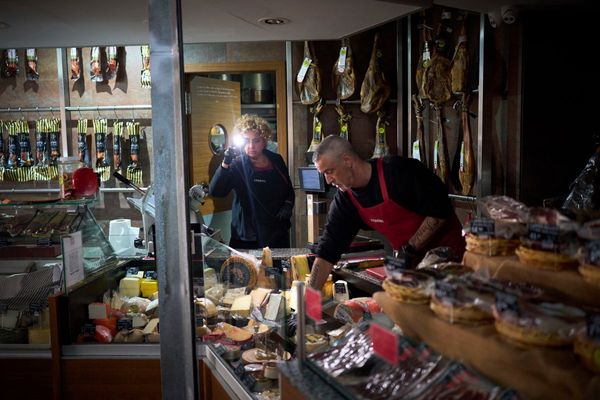A drive out of Darwin and into the heart of the city's suburbia, a peculiar smell drifts out of a home and it's drawing in the flies.
"It's like a real dead fishy smell," said Mark Motlop, who cooks the spicy condiment, blachan, from his home in Wulagi.
"But as you start to cook it and add all the ingredients, you get a sweet smell and it turns into something that you get used to," he said.
Loaded with a mix of fresh chilli, ginger, garlic, onion and shrimp paste, blachan is a popular relish across Australia's far north.
How it tastes is either loved or loathed, and getting your hands on a jar usually comes down to local connections.
"If we have a barbecue, the blachan is always on the table," Mr Motlop said.
"If you go to a wedding in Darwin, there'll be blachan there, someone will sneak it in.
Spices, family and 'that stench'
Mr Motlop grew up watching his father Edward, who moved to Darwin from the Torres Strait Islands in the 1950s, make the spicy sauce.
His father made "the real deal", he said, using fresh shrimp paste, known as hama, sourced from a Chinese grocer well before the packaged varieties came to town.
However, Mr Motlop couldn't stay in the kitchen for long to watch his father make it because of the "stench" that would rip through the house.
The story of the travelling recipe
When he turned 18, Mr Motlop left Darwin to play Australian rules football with the South Australian Football League.
There was no blachan to be found in Adelaide, so he was forced to learn the recipe over expensive long-distance phone calls to his father back home.
"I continued making it and just tried to make it as good as my dad did," the 63-year-old said.
After playing football in leagues across the country, Mr Motlop came back to Darwin and played 269 games with the Nightcliff Football Club – where his family name reigns.
He then spent the next 30 years of his life coaching most football clubs in Darwin and said blachan was key to his success as a coach.
Tracing the history of blachan
In Indonesia, the spicy shrimp sauce is known as sambal belacan and throughout South East Asia, the delicacy goes by many different names.
Growing up, Mr Motlop thought the sauce was "just a Torres Strait Islander thing" until he noticed his Indigenous family on his mother's side were making it too.
It led him to think about Makassan seafarers, who fished for trepang in northern Australia and traded with Aboriginal people along the Arnhem coast in the 18th century.
"The Makassans were definitely part of that trade … they had a big part to do with blachan coming to Australia," Mr Motlop said.
Communities unite over love for chilli sauce
Hidden at the back of an inner-city arcade, Nurainiah Majid starts her week by making a fresh batch of sambal belacan for customers at her Indonesian restaurant.
Three kilograms of fresh chillies, bought at the local market, are first to go in the blender with onion, tomato and a block of packaged shrimp paste, that resembles a soap bar.
Unlike Mr Motlop's method of simmering everything in a pot, Ms Majid fries her mix in a wok until the chillies change colour and the flavour is locked in.
"I put the fire on and cook it with a bit of oil, salt and sugar, that's it … but you have to be careful not to burn it," she said.
It's a recipe the 46-year-old learnt from her mother back home in Surabaya in East Java, and brought it with her to Australia, when she immigrated with her husband in 1997.
When she opened her restaurant, The Sari Rasa, in Darwin 20 years ago, Ms Majid said she "couldn't believe it" when Territorians were asking for blachan – the phonetic way of saying shrimp paste in Bahasa.
The mother of five regularly gets customers from Arnhem Land popping into her store for the relish and said "it's all they want" from the bain-marie.
The secretive side of blachan
Nurainiah Majid said "there are no secrets" to her recipe and she's happy to share it with people who ask.
But Mr Motlop said it's not the same in his circles, where Darwin's blachan makers are fiercely guarded about what they put in.
"People are pretty protective about what they make and how good theirs is … there's a bit of rivalry.
Mr Motlop is fairly open about his ingredients - except for one, which he adds to the pot at the very end.
"A good chef never gives away his full recipe … so that's the one thing that I don't let you know what I put in," he said.
As for who can claim ownership to the relish in Australia?
Mr Motlop said he'd have to "build a 20-foot fence with barbed wire" if he said Darwin owned it over Cairns and Broome and said the sauce has come to represent the way of life, up north.
"People from all walks of life will want it, whether you're Indigenous or not, or from another country … you'll have a taste and you'll want more."







